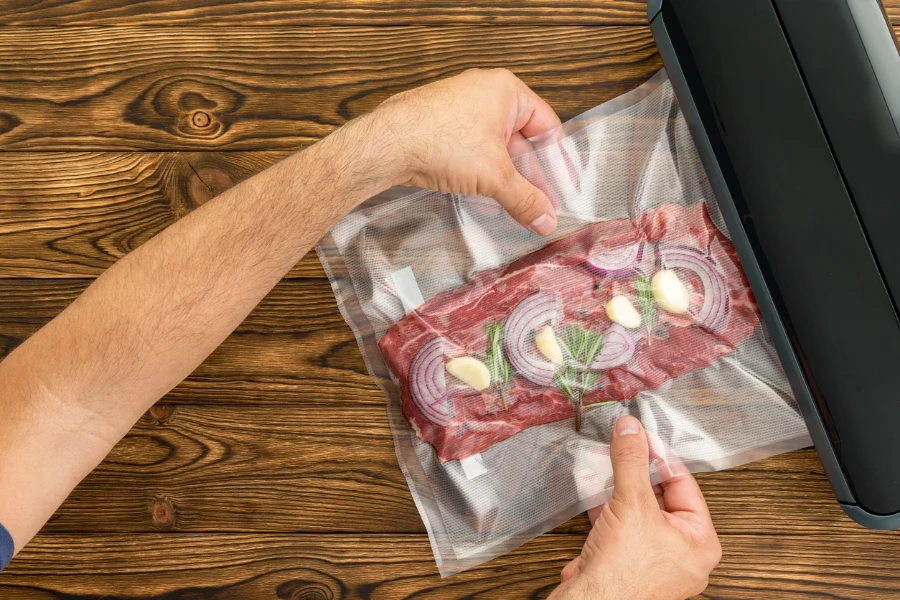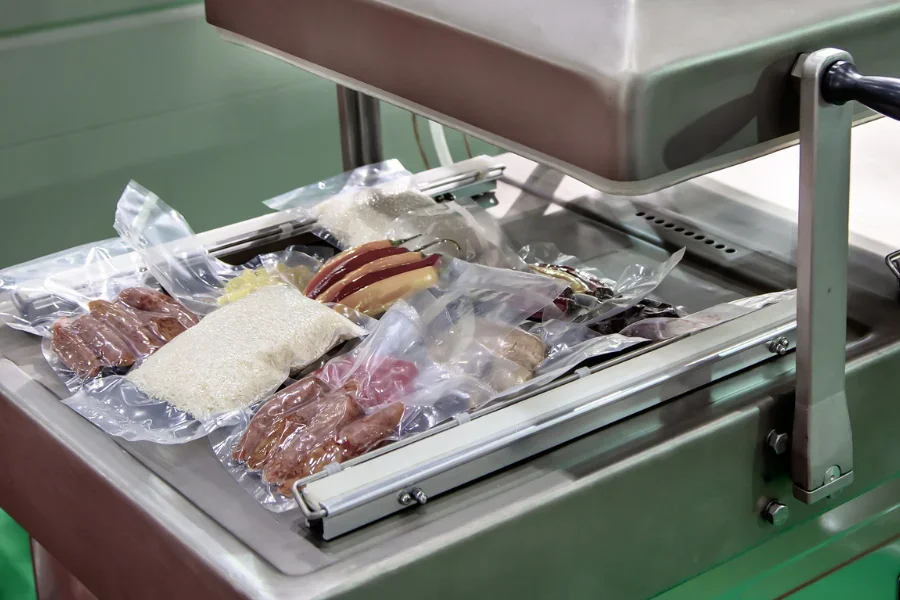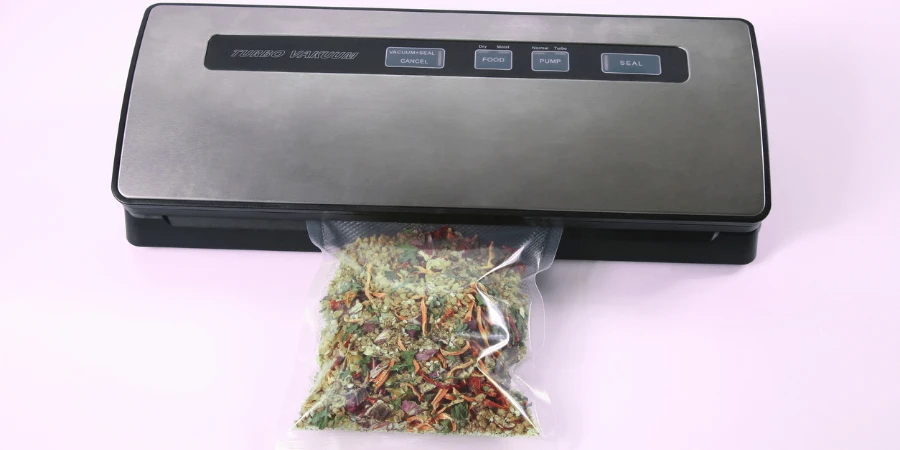In an era where the freshness of food and efficient storage solutions are paramount, the vacuum sealer stands out as a pivotal tool in kitchens and industries alike. This article delves into the intricacies of vacuum sealers, shedding light on what makes them indispensable for prolonging the shelf life of various products. By understanding the key aspects that users care about, we can navigate the vast landscape of vacuum sealing technology with confidence and precision.
Table of Contents:
– The fundamentals of vacuum sealing
– Types of vacuum sealers and their applications
– Key features to look for in a vacuum sealer
– Maintenance tips for your vacuum sealer
– The impact of vacuum sealing on food quality
The fundamentals of vacuum sealing

Vacuum sealing is a process that involves removing air from a package before sealing it. This method significantly reduces the oxygen level in the packaging, which in turn slows down the deterioration of the product. By creating an almost airless environment, vacuum sealers inhibit the growth of bacteria, fungi, and other microorganisms that contribute to spoilage. Understanding the science behind vacuum sealing not only enlightens us about its efficiency but also highlights its role in sustainable food preservation practices.
The technology behind vacuum sealers has evolved, incorporating sophisticated features that cater to a wide array of needs. From domestic kitchens to commercial settings, the versatility of these machines is evident in their ability to handle different materials and product types. Whether it’s sealing delicate fruits or robust cuts of meat, the adaptability of vacuum sealers underscores their importance in today’s preservation toolkit.
Moreover, the environmental implications of using vacuum sealers are noteworthy. By extending the shelf life of food, these machines play a crucial role in reducing waste. In a world grappling with sustainability challenges, the adoption of vacuum sealing technology is a step towards more responsible consumption patterns.
Types of vacuum sealers and their applications

Vacuum sealers come in various designs, each tailored to specific needs and environments. Handheld models offer portability and convenience for home use, ideal for sealing small batches of food. On the other hand, chamber vacuum sealers, often found in commercial settings, are designed for high-volume sealing. These machines can handle a wide range of products, from liquids to solid foods, providing airtight seals that ensure maximum freshness.
External vacuum sealers represent another category, striking a balance between the compactness of handheld models and the efficiency of chamber sealers. These units are suited for both home and small business use, accommodating larger bags than handheld devices. Understanding the distinct capabilities of each type of vacuum sealer empowers users to make informed decisions based on their preservation needs and volume requirements.
The selection of a vacuum sealer also depends on the specific applications it will be used for. For instance, businesses in the food industry might prioritize chamber vacuum sealers for their ability to handle liquid-rich foods without compromising the seal. Meanwhile, home users might lean towards external or handheld models for occasional use with dry goods. Recognizing the diverse applications of vacuum sealers is essential for optimizing their benefits in various contexts.
Key features to look for in a vacuum sealer

When choosing a vacuum sealer, several key features warrant attention. The seal quality is paramount, as it directly impacts the shelf life and freshness of the sealed items. Look for sealers that offer adjustable sealing settings to accommodate different types of bags and materials. This flexibility ensures that both delicate and sturdy items can be sealed effectively.
Another critical feature is the vacuum strength. A sealer with adjustable vacuum pressure allows for the gentle preservation of soft or fragile items, preventing them from being crushed during the sealing process. Conversely, a strong vacuum is essential for removing as much air as possible from the bag, which is crucial for the preservation of meats and other perishables.
Ease of use and maintenance are also important considerations. Vacuum sealers with intuitive controls and clear instructions simplify the sealing process, making them accessible to users of all skill levels. Additionally, machines that are easy to clean and maintain promise longevity and consistent performance, ensuring that your investment continues to pay off over time.
Maintenance tips for your vacuum sealer

To ensure the longevity and efficiency of your vacuum sealer, regular maintenance is essential. Start by keeping the sealing bar clean; after each use, wipe it down to remove any residue or particles that could interfere with the sealing process. This simple step goes a long way in maintaining the quality of the seal.
It’s also important to check the vacuum sealer’s gaskets and seals regularly for wear and tear. Replacing these components as needed can prevent air leaks, which compromise the vacuum’s effectiveness. By keeping an eye on these critical parts, you can maintain optimal performance and extend the life of your machine.
Lastly, be mindful of the manufacturer’s recommendations for maintenance and cleaning. Adhering to these guidelines ensures that your vacuum sealer operates safely and efficiently. Regular maintenance not only preserves the functionality of your machine but also supports the quality and freshness of your sealed products.
The impact of vacuum sealing on food quality

Vacuum sealing has a profound impact on the quality of food. By significantly reducing the presence of oxygen, it slows down the oxidation process, preserving the color, texture, and nutritional value of food. This method of preservation is especially beneficial for seasonal produce, allowing consumers to enjoy the freshness of their favorite fruits and vegetables year-round.
Moreover, vacuum sealing extends the shelf life of food, which has economic and environmental benefits. Reducing food waste is crucial in today’s world, and vacuum sealing offers a practical solution. Households and businesses alike can save money and minimize their ecological footprint by embracing this efficient preservation method.
In conclusion, the role of vacuum sealing in enhancing food quality cannot be overstated. It’s a testament to how technology can be harnessed to support sustainable living practices, contributing to a future where food preservation aligns with environmental stewardship.
Conclusion:
Vacuum sealers are a cornerstone of modern food preservation, offering a versatile and efficient solution for extending the freshness and shelf life of a wide range of products. By understanding the fundamentals of vacuum sealing, the types of sealers available, key features to consider, maintenance best practices, and the impact on food quality, users can make informed decisions that cater to their specific needs. Embracing vacuum sealing technology not only contributes to reducing food waste but also promotes a sustainable approach to consumption and storage.




